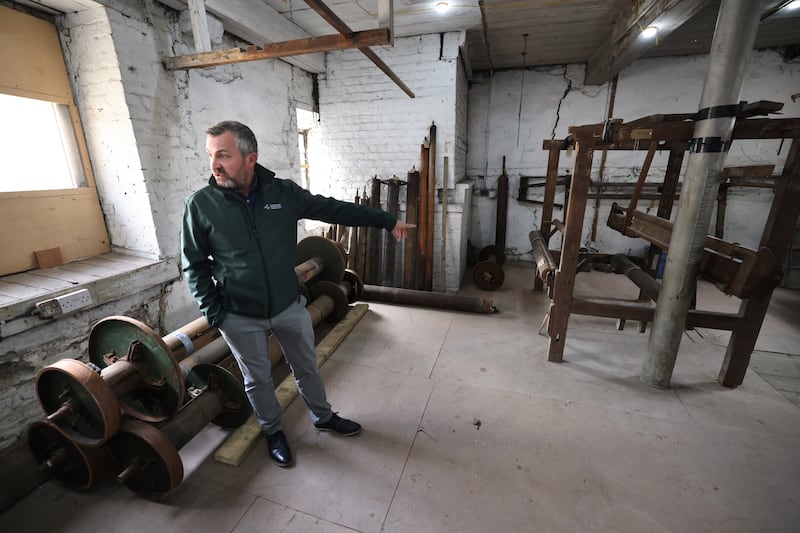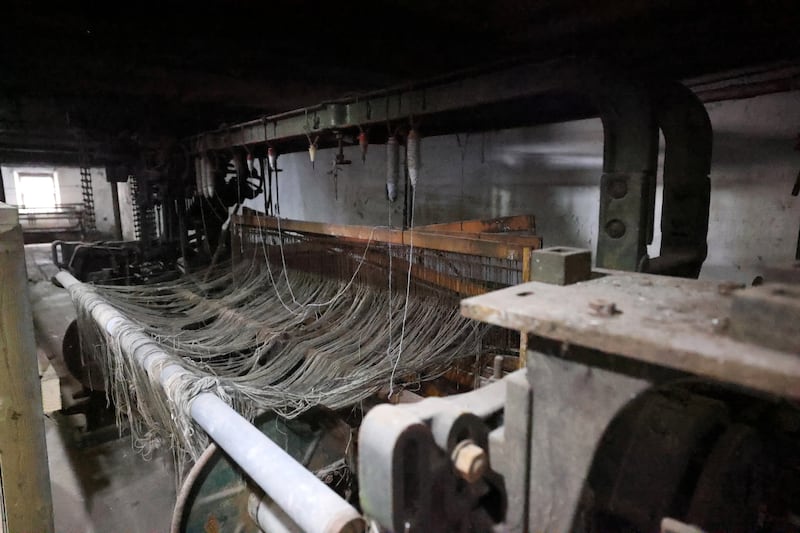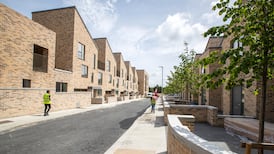It has been 23 years since Kilmainham Mill, the last working textile mill in Dublin, was closed, bringing to an end centuries of industrial activity at the site.
The fast flowing River Camac, a tributary of Liffey, had mills running along its banks when the original renewable energy, the power of water, milled flour and then cloth for generations.
One of the largest of these was Kilmainham Mill, which milled flour until it was bought in 1904 by a Yorkshire man, Charles Bates, who converted it for textile use. The business lasted for 70 years but it could not survive the advent of “fast fashion”, with clothing emerging from the developing world at a fraction of the cost that it was made for domestically.
The mill was bought in 1973 by John O’Loughlin Kennedy and his sister Noreen, and after that by a local teacher Damien Shine.
READ MORE

He restored the mill, stables and house and built up a flourishing textile finishing business with some handweaving, dyeing and manufacturing. It finally closed as a working mill in 2000.
The chimney, built in the 1860s for a steam engine, hovers over the mill and was a constant reminder of this hulking but redundant site. The original water wheel was removed some time in the 1950s, by which time the mill was powered solely by electricity, though its owners found it could never replace the power of water.
The water wheel harnessed the power of the diverted Camac to fall over the mill race. All that is left are the huge brackets which held it in place. Nobody knows where it has gone to.
More positively, the loss of the water mill opened up a substantial amount of river frontage around the site for use as a community space. There are also plans to turn the old mill race into a linear park.

Proposals to restore the building were first made in 2003, but nothing happened until last year. In December 2018, Dublin City Council bought the site for an undisclosed price. The tender for stabilisation works went out the week before Covid-19 hit. Only last August did the work commence, and the contractor finished early this month.
The site wore the neglect of more than two decades. The roof had fallen in at several points. The windows were broken and the place was covered in pigeon droppings.
The floors, which still have some of the original industrial machinery, weighing several tonnes each, had to be propped up. The building had an abundance of asbestos and the grounds were covered with an invasive plant species, Japanese Knotweed.
The building is now safe for future development and the firm Howley Hayes Cooney has been engaged as conservation architects.
This is the first step in a multiannual process to turn Kilmainham Mill into a major tourist attraction and community centre in Dublin. It could hardly be better placed. Kilmainham Gaol, across the road, now has a visitor centre and has become a popular attraction, Richmond Barracks in Inchicore has been reopened and the Royal Hospital Kilmainham, which houses the Irish Museum of Modern Art (IMMA), continues to flourish.
There are plans for a biodiversity education centre not far away in Chapelizod.

“We are talking about a cultural cluster,” said Dublin City Council heritages contract manager Donncha Ó Dúlaing. “The potential there is huge. It’s about unlocking that potential to see what kind of a mix of uses we can do.”
The most likely use for the redeveloped Kilmainham Mill is as a museum showcasing Dublin’s industrial heritage. In the years before it shut down as a working mill it was a site for preserving old craft guilds such was weaving, cloth-finishing and coopering.
The site is so big that it is unlikely to have a single use. Meanwhile, before it is fully finished, the grounds could allow for weekend markets in the courtyard with some of the outhouses suitable for pop-up cafe and food businesses.
“The idea is to get it into people’s mind as a venue,” Mr Ó Dúlaing explained. “We have had brilliant relationships with the local community. This has to be a public cultural facility – whatever that means, but if it is not sustainable, it won’t last.
“We are looking over the summer months. We are going to take a step back. We are just finishing off a new conservation plan for it which will give us full details of what is significant about the site.
“What are the main elements we need to develop? We are going to do a master vision over the summer months. We need to look at what people’s expectations are for the site.”
He says a “fair wind” might see a completely restored Kilmainham Mill within four years, but the big obstacle will be funding. Dublin City Council has not got the money to do it, so most of it will have to come from central Government. He estimates the final cost will be between €25 million and €30 million.
“It will be a big-ticket item,” he said.


















